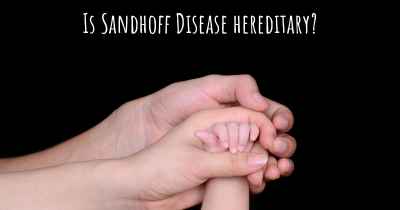10
Which are the causes of Sandhoff Disease?
See some of the causes of Sandhoff Disease according to people who have experience in Sandhoff Disease

It is created by two parents carrying a mutated gene and passing it on to their offspring cause the disease. Even with both parents carrying the disease in their genome, there is only a 25% chance that they will have a child containing the genetic coding for the disease. Each form of the disease is caused by the differences in the various mutations of the genome, in particular the codons on the 14 exons in the HEX B gene located within chromosome 5 leading to the differences in severities of the symptoms. The difference in the codons has the consequence of inhibiting two enzymes located in the lysosomes of the neurons of the central nervous system. Lysosomes contain various enzymes to break down byproducts and toxins to ensure they do not accumulate enough to interfere with the function of the central nervous system. Using restriction enzymes, it was discovered that a mutation on chromosome 5 particularly within the C1214T allele caused the adult onset form of Sandhoff Disease. For the patient showing symptoms of the infantile or juvenile form they have a mutation on exon I207V from their father, and a 16 base pair deletion from their mother which can be located on as many as 5 exons, exons 1-5.
Posted Feb 24, 2017 by Levi Christopher Lucero, Jr. 2185
Translated from spanish
Improve translation
For that a thousand people suffer from this disease, mom and dad must be carriers liabilities of the gene of this disease, the two must be carriers, and in each pregnancy there is a 25% chance that the baby appears, the 25% chance on each quest
Posted May 11, 2017 by Mara 700








